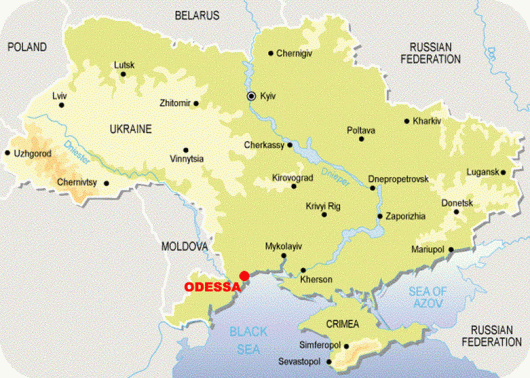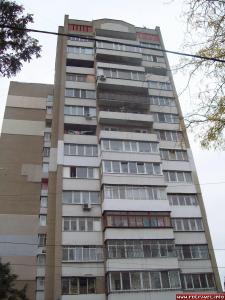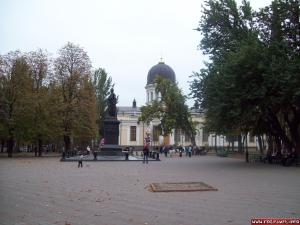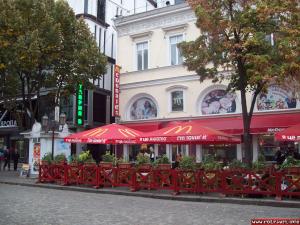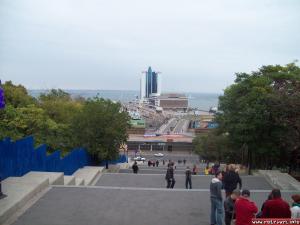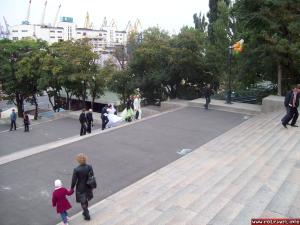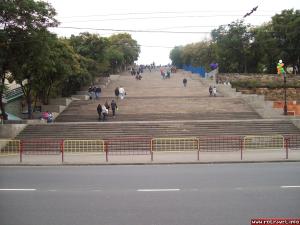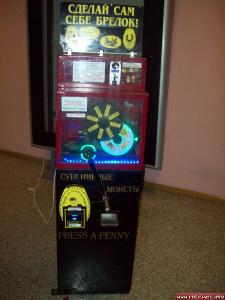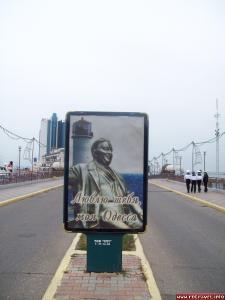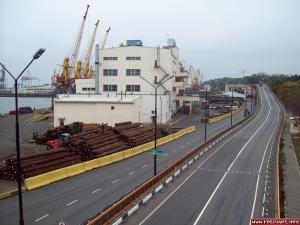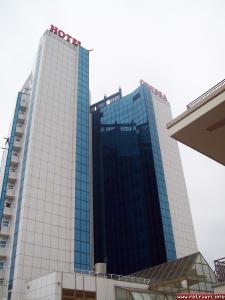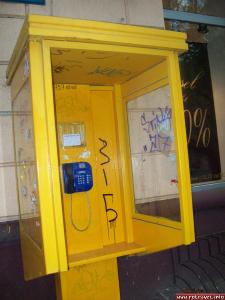Odessa or Odesa (Ukrainian: Одеса; Russian: Одесса; Romanian: Odesa; Greek: Οδησσός; Yiddish: אדעס) is the administrative center of the Odessa Oblast (province) located in southern Ukraine. The city is a major seaport located on the shore of the Black Sea and the fourth largest city in Ukraine with a population of 1,029,000 (as of the 2001 census).
Odessa was founded by Hacı I Giray, the Khan of Crimea, in 1240 and originally named Khadjibey after him. After a period of Lithuanian control, it passed into the domain of the Ottoman Sultan in 1529 and remained in Ottoman hands until the Ottoman Empire’s defeat in the Russo-Turkish War of 1792.
The Russians renamed the city Odessa in 1794. From 1819–1858 Odessa was a free port. During the Soviet period it was the most important port of trade in the Soviet Union and a Soviet naval base. On January 1, 2000 the Quarantine Pier of Odessa trade sea port was declared a free port and free economic zone for a term of 25 years.
In the 19th century it was the fourth largest city of Imperial Russia, after Moscow, Saint Petersburg, and Warsaw. Its historical architecture has a style more Mediterranean than Russian, having been heavily influenced by French and Italian styles. Some buildings are built in a mixture of different styles, including Art Nouveau, Renaissance and Classicist.
Following the Bolshevik Revolution in 1917 during World War I, Odessa was occupied by several groups, including the Ukrainian Tsentral’na Rada, the French Army, the Red Army and the White Army. Finally, in 1920, the Red Army took control of Odessa and united it with the Ukrainian SSR, which later became part of the USSR.
During World War II, from 1941–1944, Odessa was subject to Romanian administration, as the city had been made part of the Transnistria occupation district. Romanians used the name ‘Odessa’ as the Ukrainian version of the city. The Romanian occupation may be described a „soft one” compared to the short period of German occupation in 1944.
The Romanian commanding General made an unofficial armistice with the partisans hidden in the city’s catacombs, who in turn did not mount much resistance to the Romanians.
When the people of Odessa suffered from hunger, the Romanians transported grain from Bessarabia to Odessa in 1942 and 1943. It is told that the Romanians imported the best cognac and wines, in addition to two train loads of the best French food in 1942 to the restaurants of Odessa, from France.
During the April 1944 battle Odessa suffered severe damage and many casualties. Many parts of Odessa were damaged during its siege and recapture on 10 April 1944, when the city was finally liberated by the Red Army.
Following the Siege of Odessa, and the Axis occupation, approximately 25,000 Odessans (mostly Jews) were murdered and over 35,000 deported. Most of the atrocities were committed during the first six months of the occupation which officially begun on 17 October 1941, after the bombing of the Romanian HQ and the subsequent brutal response of the Romanian military.
After this time period, the Romanian administration changed its policy, refusing to deport the remaining Jewish population to extermination camps in German occupied Poland, and allowing Jews to work as hired labourers. As a result, despite the tragic events of 1941, the survival of the Jews in this area was higher than in other areas of occupied Europe.
Source: Wikipedia
Travel journal
If you are in Chisinau and you want to arrive in Odessa, the best idea is to get a vehicle –a bus from North Station (near Calea Basarabiei market).
So we did.
At 07.30 we took the first bus which goes to Odessa and we paid for a ticket 93 Moldavian lei (it means 5.8 euros). The bus-driver gave us an inquest to complete for entering in Ukraine.
A half of this inquest you give when you come in the country and another one when you leave it. We passed the customs very quickly, without problems and in 4-5 hours we arrived in Odessa.
As we didn’t have a map for orientation, we started to ask people how to arrive to Potemkin Stairs, which was our first visit. Honestly, we tell you, you must be patient with Ukrainian people because how many people you ask, you will receive different contradictory answers to arrive at the place you need 🙂
In this way, we took the trolley number 5, we paid for the ticket 1 grivna (0.08 euros) and after 4 stations we were on Tiraspol’skaya Street. We walked for other 15 minutes among some nice old buildings and we arrived at the Poteomkin Stairs.
By the way, the streets from Odessa are very nice in autumn :P.
We visited the Passage from Odessa which impressed us very much by its architecture. We have to recognize the prices from those shops were pretty high. On the streets, we saw a lot of expensive bars, restaurants and pubs, but interesting arranged, however, with few clients.
From the beginning, we were a bit disappointed a cause of those stairs-we thought it would be more imposing, but it looked like some usually stairs. From the right side, there was a funicular which leave you down, at the beginning of the stairs.
Sincerely, we don’t see the meaning of this funicular because the distance is not so long, it’s only 142 meters you can descend in 2 minutes!
A funny moment was when we had to split thousands of balloons threw from the roof of a building-people from Odessa celebrated the inauguration of a shopping center. It was nice to see people of all ages doing a thing that gave them a smile on theirs faces.
If you are in Ukraine, it is impossible to not respect the tradition- we bought beer and dry salt fish! How the harbour was near, we had a freezing walk on the promenade; the sea was not so hospitable with us.
At half past 5 we had to take the bus to return in Chisinau so we had to hurry to arrive at the bus station. We had the same problem: all people we asked what trolley we must take gave us different answers, but in the end we arrived to the final destination. 😛
From the bus station we bought some carrot pies (3.5 griva=0.25 euros each pie). The ticket price Odessa-Chisinau was 53 grivnas/person (equal 4 euros). At the customs; we gave the second part of that inquest we completed before we entered in Ukraine and in 4 hours we were in Chisinau.
Odessa seemed us to be a nice, pretty big city, with a lot of interesting places to visit, however, better in summer 😉
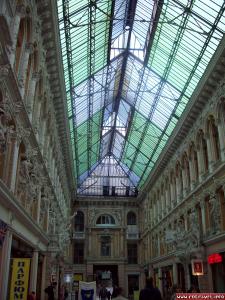
Built in 1899, by polish architect Lev Vlodek, the passage belonged to the merchant Mendelevich. Now, passage is one of the lare largest auction centers in Odessa

Hair for all Ukraine from Yulia Volodymyrivna Tymoshenko (Ukrainian: Юлія Володимирівна Тимошенко), the Prime Minister of Ukraine 🙂
